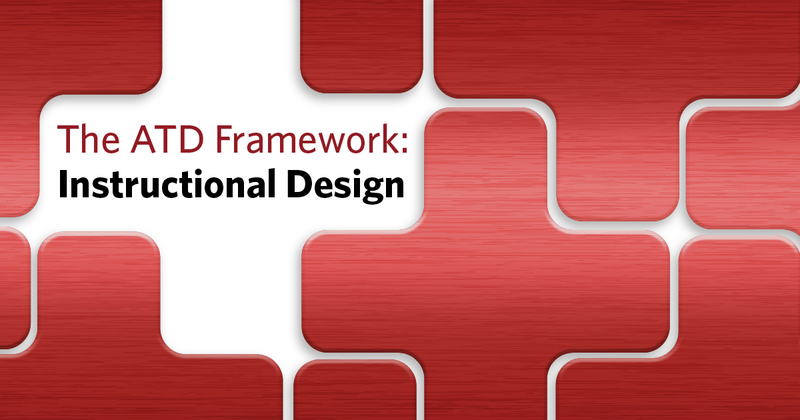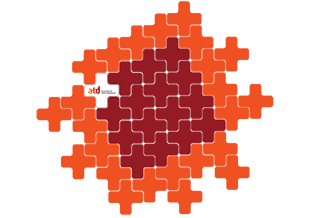ATD Blog
The ATD Talent Development Framework: Instructional Design
Fri Aug 26 2016

ATD developed the talent development framework and puzzle to help practitioners understand the different components of talent development, and how organizations can build their own frameworks to address their unique needs. This blog series explores each component of the talent development framework, why it’s important to the field, and what resources ATD offers to practitioners who want to learn more.
Instructional Design
The goal of instructional design is to create formal and informal learning solutions using a variety of methods, so learners gain knowledge or skills more successfully than they would without the instruction. The designer works to restructure content with the learner in mind while incorporating an array of learning strategies, tools, and approaches to appeal to learners. Instructional design puts a focus on outcome over content and interaction over questions, and aims to maximize both learner motivation and learner application. An instructional designer must also keep in mind the ever changing trends, conditions, and pace of the global workforce.
Instructional design is evolving in the technological age. While traditional classroom learning is still the most prominent kind of instruction used, e-learning and mobile content delivery are on the rise. These present new challenges, such as figuring out how to make content interactive and appealing without in-person instruction. Competency in different instructional approaches makes this transition from in-person to online easier on the designer and the learner.
The ASTD Competency Study (Updated now to ATD Talent Development Capability Model™) identifies skills that talent development professionals need to be competent in instructional design:
• Conduct a needs assessment.
• Identify an appropriate learning approach.
• Apply learning theory.
• Collaborate with others.
• Design a curriculum, program, or learning solution.
• Design instructional material.
• Analyze and select technologies.
• Integrate technology options.
• Develop instructional materials.
• Evaluate learning design.
Good instructional design is an essential component of effective training that engages, motivates, drives learning retention, and creates business impact.

We’ve assembled some additional resources to explore:
• Check out this research report on instructional design in the modern age.
• Stay up-to-date on current trends and skills for fresh content delivery.
• Expand your abilities as a mobile learning designer.
• Boost learner motivation with seamless e-learning design.
• Step into the new age of instructional design technology.
• Refresh your design skills to keep learning interesting.
• Keep up with the pace of change and technology for instructional design.
• Learn about the three kinds of instructional design prototypes.
• Templates for Managing Training Projects by Willis H. Thomas
• The Accidental Instructional Designer, 2nd Edition by Cammy Bean
• ISD From the Ground Up, 4th Edition by Chuck Hodell
• ASTD Handbook, 2nd Edition (Updated now to the TDBok™ Guide, 2nd Edition)
• Take a deeper dive into instructional design and enroll in ATD’s E-Learning Instructional Design Certificate Program.
You've Reached ATD Member-only Content
Become an ATD member to continue
Already a member?Sign In
